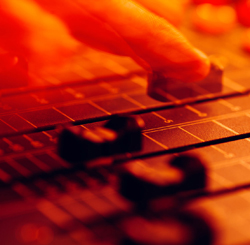When first starting down the audio path, I eagerly read every scrap of information I could get my hands on about how the “pros” approached their craft. What kind of gear were they using? What techniques? What was the “secret sauce”?
In the late 1980s, I was much more interested in recording and had not yet seen the light about live sound reinforcement. And in those days, the Lord-Alge brothers were a big deal in the recording world. While Home Recording magazine was more my speed back then, I’d drool over the pictures of studios and equipment in Mix.
Then, in the early 90s, EQ magazine was created to bridge the gap. One of the things I remember reading in an article of the time was Tom Lord-Alge stating that he “learned the craft of pulling a mix together quickly by doing live sound.”
I recall this because it was surprising. I saw live sound as a rather crude affair, at least from what I’d witnessed in my limited experience. I mean, those gorgeous studios in Mix were using Neumann microphones, Pultec EQs, Universal Audio LA2A compressors and Neve consoles – the cream of the crop. These tools dwarfed what was being used on the live side. And this was years before I heard touring sound pioneer Albert Leccese espouse his three rules for live sound: 1) Make noise. 2) Keep making noise. 3) Make it sound good if you can.
Different But The Same
But fate intervened in the mid-90s when I learned of a sound tech position available with the Air Force band out of Washington, DC. I decided to go for it, to follow Tom’s observation about “getting some live chops” that could be applied in my future studio career. Except it didn’t turn out that way.
I caught the live sound “bug,” coming to enjoy the thrill of mixing shows in front of an audience. More importantly, I came to understand and respect the world of live sound due to the myriad challenges and rewards woven into its very fabric. Different gear, yes, but no less advanced. Different techniques, of course, but no less sophisticated.
A funny thing happened along the way – I noticed that a lot of long-time live sound people looked down on the studio world, similar to the way “jazzers” look down on classical musicians (and vice versa). What was going on? Well, just as I had thought as a studio person that live reinforcement was a bit déclassé, the live folks tended to think that the recording world was rarefied and “out of touch with the real world.”
Fast forward to now. I’ve come to believe that while there’s an element of truth to both belief sets, there’s also been a healthy exchange of ideas, best practices, and encouragement rather than divisiveness. One side delivers recorded sound to millions, the other side delivers live sound to millions. So both sides form a whole that is critical to the success of the artists involved and the enjoyment of consumers worldwide.
Both make the most of available techniques while seeking to do even better, both make the most of available technology while driving for something better, and both work closely with manufacturers to help achieve what is today impossible but tomorrow a reality.




















